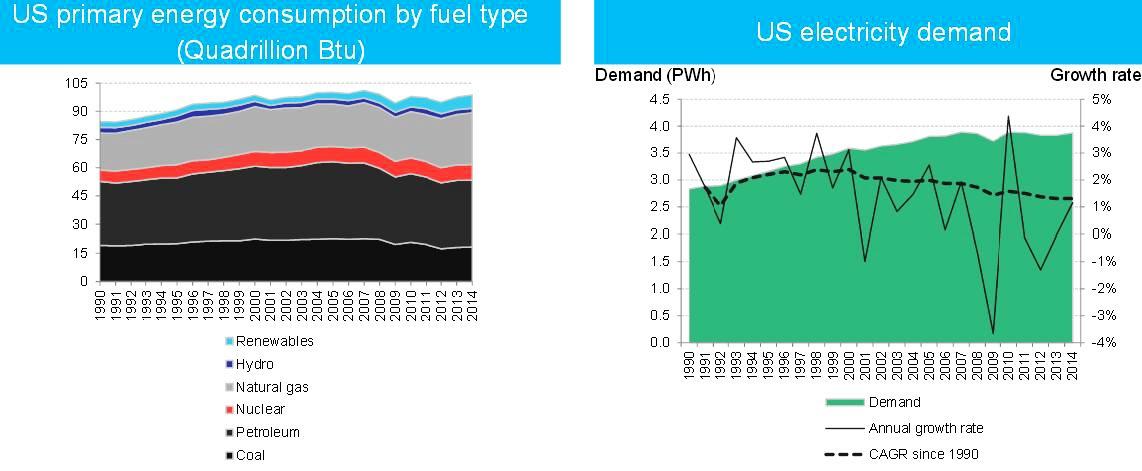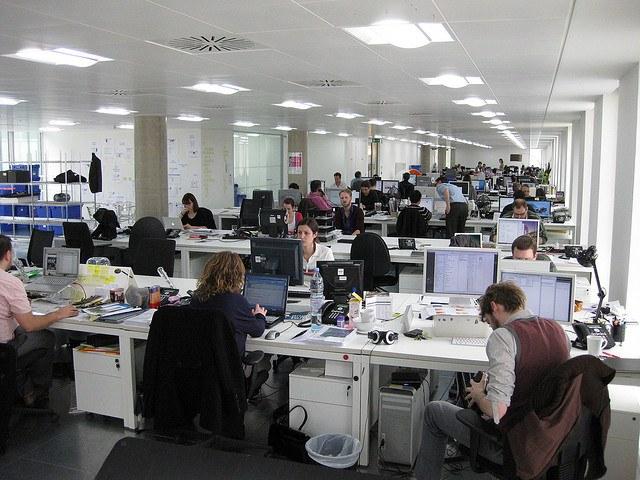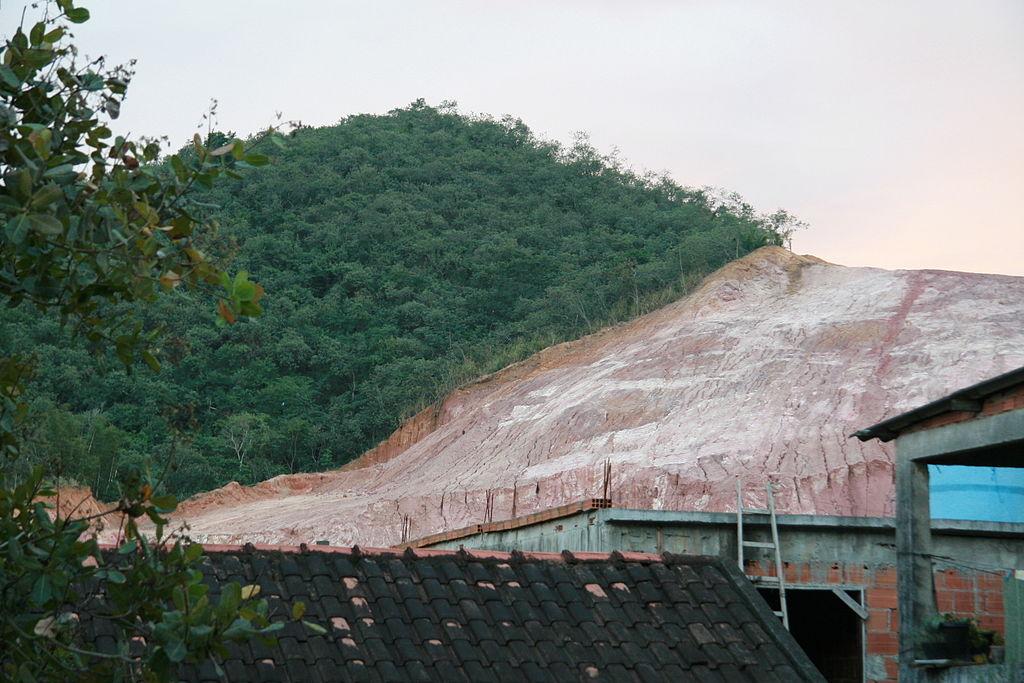Water: Can You Put a Price on the Priceless?


By Meghna Tare
Water makes life possible. It makes economies function globally.
Our water supplies are under severe strain due to growing demand, pollution and climate change. Growing needs of locales from Las Vegas to the Lone Star state are all pointing to a water-constrained future. Re-thinking how we value water is a critical first step in reducing these strains and safeguarding future water supplies.
One could argue that the answer to water scarcity is to monetize water. The idea of treating water as a commodity like oil or gold might seem disturbing on its face. Access to clean water ought to be a human right, and the United Nations supported this with a 2010 resolution. Environmental economists suggest applying the free market force — Adam Smith’s “The Invisible Hand” speaks to this issue — by allocating a certain amount of water for everyone for free (or almost no cost) and have a free market for the rest.
Water is a finite and precious resource, but our economic systems treat it as limitless and of little value. For many companies and other water users, their water bills are so small that it hardly seems worthwhile to conserve. The result is unsustainable water use across much of our economy — from industry to agriculture to homeowners.
Water utilities, oil and gas, and agriculture: These three sectors are responsible for more than 90 percent of America’s water consumption. Use of innovation and technology like drip irrigation, education in water-saving techniques and better pricing structure can provide rational incentives to water conservation measures in agricultural practices, which accounts for 70 percent of the global water use.
The business of water
Water is a very capital-intensive business and very fragmented because of the infrastructure assets, such as pipelines, that are involved in the management and delivery of this asset. One cannot wheel water across power lines. And unlike electricity, water is expensive to move, so the transportation cost is huge; the treatment requirements are significant especially to meet regulatory and environmental requirements.
Eighty-five percent of U.S. populations are served by a municipal utility rather than an investor-owned utility (IOU). There are 55,000 water utilities; 40,000 of those are extremely small and only nine are IOUs.
The municipal bond market is about $3 trillion dollars, and water and public utilities make up 10 percent of this market. The large utilitiess that are regulated and have a good bond rating are successful in going into the municipal bond markets and raising capital. The U.S has a subsidized municipal debt that makes it easier to raise municipal debt. But smaller- to medium-sized utilities are struggling to find capital. They operate on cash-revenues to pay for the operation costs and other expenses of their business.
Likewise, large water utilities are expected to see a 40 percent increase in long-term debt in the next five years. To combat this financial and resource crisis, municipalities are becoming more focused on charging rates that cover the cost of debt, cost of operation and cost of replacement infrastructure. This full cost of capital is very critical to addressing the issue of water conservation and efficiency. But municipalities have not raised the rate for the past five to 10 years.
Pricing the priceless
Regions with the most serious water availability challenges have the lowest rates for water and sewage services in the country. For example, residents of Dallas pay $9.53 for 3,750 gallons in billable water usage compared to $19.81 for Atlanta, which receives more rainfall. According to Fortune, New York City charges residential consumers $3.37 per cubic meter of water; Chicago is $1.46; and Miami is $1.15.
Water is politically sacrosanct: We do not want to talk about paying for water and consider it to be a human right! Utilities seeking to raising water rates to convey the true cost of each additional gallon of water delivered often face considerable political backlash. For example, the mayor of Livingston, California was kicked out of office due to an election recall spurred by voter anger over a water rate increase.
But then, keeping in mind the theory of tragedy of the commons, we are headed for a collision course of consolidation or privatization of water utilities similar to the U.K. in 1980s -- and even water war -- if we do not take steps to improve the cost structure. The City of San Diego is stepping up to the challenge by increasing its water rate and proposing a four-tier rate structure. This new structure, the city says, is designed to provide a greater financial incentive to conserve water, so that those who elect to use far more water will have to pay the higher marginal cost of providing it.
The city, which is largely dependent on the depleted Colorado River, has taken steps to promote conservative use of local water resources and decrease its reliance on imported water by diversifying local water supplies. These measures have included the development of a water recycling system, a desalinization system, urban conservation policy and, most notably, an urban-rural water conservation partnership in which the city compensates farmers in surrounding areas for implementing agricultural water conservation measures.
Managing water risk with sensible rates
A 2010 CERES report presented key recommendations for utilities, investors and credit-rating agencies to manage emerging water risks in the utility bonds market. These included:
- Disclosure of material water stresses such as exposure to persistent drought or long-term climatic changes
- Potential and existing regulatory actions related to environmental flows, assessment of potential capital costs
- Rate adjustments and revenue effects from water supply risks
- Strategies to manage demand and reduce leakage
- Investment in infrastructure
- Rainwater harvesting and natural water capture
A World Bank report predicts the demand for water supply will outstrip supply by 40 percent in the next 20 years. Will this be solved by introducing ‘markets’ inspired by Ronald Coase's theory that markets are more efficient at solving properly priced ‘externalities’ than firms or government. I think both!
Whenever one is faced with two different paths, each with its certainties and unknowns, you could always take the path less travelled, but the cardinal rule in strategic planning is to take a path that allows you to shift to the other path if your initial decision should prove wrong. We have to apply a systems-thinking approach to this problem — everything is part of the puzzle. As futurist Peter Schwartz advises in his book “The Art of the Long View" -- “We should choose the option that gives us the most options in the future.”
Image credit: Flickr/Jocelyn Kinghorn
Meghna is the Executive Director, Institute for Sustainability and Global Impact at the University of Texas at Arlington where she has initiated and spearheaded many successful cross functional sustainability projects related to policy implementation, buildings and development, green procurement, transportation, employee engagement, waste management, GRI reporting, and carbon management. She is a TEDx UTA speaker, was featured as Women in CSR by TriplePundit, has done various radio shows on sustainability, is an active blogger, and an MBA Candidate in Sustainable Management at the Presidio Graduate School. She has a sunny and positive attitude about life and all of its adventures. She enjoys traveling, hiking, reading, and building relationships with friends and co-workers. You can connect with her on LinkedIn www.linkedin.com/in/meghnatare/ or follow her on twitter @meghnatare
Zara Parent Company Drops Angora Products


Pictures or videos of animal cruelty immediately capture our attention. Most of us like animals and want them to be treated humanely. A company that buys angora wool, often associated with animal cruelty, is going to be targeted by activists. That’s what happened to Inditex, the parent company of the clothing chain Zara. A few years ago PETA investigated abuse on angora farms and released a video of rabbits having their fur ripped out and screaming in pain. I saw the video. It’s beyond upsetting.
Inditex recently announced that angora products will no longer be sold at its 6,500 stores. The company also owns Bershka and Massimo Dutti. “The angora products have been removed from the stores, in particular items that were in last year’s autumn and winter collection,” a spokesperson told the AFP. The company’s website states that it “does not sell products containing angora wool.”
According to PETA, 90 percent of angora wool comes from China, which lacks penalties for animal abuse or animal welfare standards. And that is why Inditex, along with other clothing retailers, no longer sell angora products. Clearly, it is impossible for the company to ensure that its angora wool supply chain is cruelty free. Inditex did not find evidence of animal cruelty at the farms that provided angora wool to its suppliers, “but after consultation with animal welfare organizations to explore more sustainable ways to produce angora and help develop better standards within the industry, we have decided that banning angora production was the right decision,” the company told the Guardian.
Selling something that is probably a product of animal cruelty is not good business. However, the working conditions in many of the factories that make clothing sold by retailers like Zara are appalling. And that is equally bad business. In April 2013, a factory building in Bangladesh collapsed, killing 1,138 workers and injuring many others. Bangladesh’s garment industry is the No. 2 exporter in the world, second only to China. Despite new government policies, workers in Bangladesh are underpaid and overworked. Very little collective bargaining occurs, and union organizers have even been killed.
Where is the kind of outrage over the working conditions of garment factory workers that is shown over animal cruelty at angora farms? Why aren’t activists targeting businesses, forcing them to ensure their supply chains are free of cruelty to humans? Surely, our fellow humans are worthy of as much outrage over abuse shown to them as are abused rabbits.
Image credit: Dennis Harper
Just the Facts: Sustainable Energy in America


The size of this year's update to the Sustainable Energy in America Factbook is a testament to just how strong the renewable energy market is these days. Published by Bloomberg New Energy Finance (BNEF) with underwriting from the Business Council for Sustainable Energy, the Factbook is 144 well-packed pages of data that attests the vibrancy of an energy sector that only two years ago could be summarized in something just bigger than a brochure.
This year's version, however, shouts out those changes -- underscoring, as BNEF says, that "the U.S. energy sector is decarbonizing." It's a concept as well as a term that was almost nonexistent at the turn of the 21st century -- and now seems to sum up the state of power generation in this country.
Accomplishments that made the list this year include:
- 93 percent of the new power infrastructure that has been built since 2000 went to support "natural gas ... or renewable energy projects." *
- $386 billion has been invested in sustainable energy since 2007, averaging $35 billion to $65 billion each year. In 2014, that investment rose 7 percent over the previous year to $51.8 billion.
- Coal has regained a tiny part of the energy market share in the past two years, but its historic slide from 49 percent in 2007 to 37 percent in 2012 is a reflection of its waning strength. With its market share now hovering around 39 percent, says BNEF, "‘structural’ trends – especially the retirement of coal plants – are underway that will probably lead to long-term increased market share for natural gas."
- Better fuel and vehicle efficiency and other innovations that have resulted in less vehicles on the road are taking a toll on gas consumption. Since 2005, gasoline consumption has dropped 8.6 percent.
- Natural gas production is up 25 percent, bolstered by improvements in technology and a surging demand.
- U.S. shale drilling is also up -- 41 percent since 2007 -- due to developments in new technology.
- Crude oil production in the U.S. has shot up 41 percent since 2007, when it averaged 5.1 million barrels a day, to 9 million barrels a day in 2014.
The Factbook also credited the Obama administration's various clean energy programs for helping to incentivize the renewable energy sector. The Clean Energy Plan, which sets recommended clean energy goals for states, has helped encourage new initiatives in states like Minnesota and California -- where solar, wind and other clean energy models are being promoted through private investment.
The Factbook offers a pretty broad overview of factors related to green business practices -- many more than can be listed here: from a breakdown of the current leaders in power generation to the cost of ownership of today's more popular vehicles. The message one gets from this year's Factbook is that green living isn't about choosing which fuel offers the least carbon emissions or how much we don't drive, but rather how we factor those reductions into the innovative and holistic strategies we use to meet our sustainability goals.
* The report does not distinguish in this statement whether it is referring to non-renewable natural gas or renewable natural gas in the executive summary (pg 8), but since the distinction was not made in its footnote, we will assume it is referring to infrastructure related to non-renewable gas sources.
Image courtesy of Bloomberg Finance L.P. and the Business Council for Sustainable Energy
Novo Nordisk Annual Report Takes Diabetes Battle to the Cities


Danish pharmaceutical giant Novo Nordisk, a leading force in the battle against diabetes, has long been admired for taking the high road on issues related to sustainability. This week the company released its 2014 integrated Annual Report, which, as has become company tradition since 2004, focuses on the triple bottom line.
The authors kept their eyes on the prize: The report bears the title, Cities Need to Fight Diabetes — But How?
The report is set up like a magazine, with a picture of a bustling modern city on the cover and three sub-headings that beckon the reader to other key issues that will be discussed inside. The company's business strategy, along with its quest to cure Type 1 diabetes and help people manage their weight, are discussed in the report. It also includes messages from top executives and the results of operations from the previous year.
Despite early setbacks in the U.S. market, the company did well financially, with revenues growing by 13 percent over the previous year, largely as the result of two new diabetes drugs, Levemir and Victoza that were launched last year.
Equating a healthy business with a healthy planet, the company also did well with its CO2 reduction target, achieving a 45 percent reduction against their 2004 baseline, while growing their business by 200 percent. The company also reduced energy consumption by 1 percent compared to last year.
But the most interesting part of the report, at least for those of us specifically interested in sustainable business, was the section on business strategy, where they talked about staying focused on the long term.
Its strategy consists of three primary elements:
- Staying focused on four therapeutic areas (diabetes, hemophilia, obesity and growth disorders)
- Continuing to develop its core capabilities of: protein-based treatments, disease understanding, protein production, new product launches and building emerging market positions.
- Values-based management system: aka the Novo Nordisk way
The 'Novo Nordisk way' is the company's commitment to triple-bottom-line principles and to being open, honest, ambitious and accountable, while treating everyone with respect. This commitment has led the company to be “more adaptive to changes in its business environment and offers opportunities for competitive advantage," the reports authors wrote.
"Novo Nordisk proactively engages with stakeholders to address global and systemic challenges that could affect the company’s success in the long term. One example is an active engagement in the framing of a new set of global sustainable development goals by the United Nations.”
The company revisits its strategy every year and works with a 10-year planning horizon.
The headline topic, which connects the diabetes epidemic to cities, also has implications to numerous sustainability initiatives. With half the world’s population living in cities and that proportion expected to grow to 70 percent by 2050, the fact that city-dwellers have a two to five times higher risk of developing Type 2 diabetes is significant. Among the causes are: rising income, an increasingly sedentary lifestyle, and increased consumption of rich, unhealthy foods.
Novo Nordisk has launched a partnership program called Cities Changing Diabetes to help address this issue. Participating cites include Mexico City; Copenhagen, Denmark; Houston; and Tianjin and Shanghai, China.
Details of the program are still developing. But it seems clear from where I sit that there are obvious opportunities: making cities more pedestrian- and bicycle-friendly, establishing community and rooftop gardening, and promoting the overall initiative to a more plant-based diet. Improvements in air quality stemming from a shift to lower carbon-emitting forms of transportation can also make a difference, given that recent studies have revealed a link between air pollution and diabetes. These preventative measures seem likely, when combined with improved diagnostic screening and early treatment, to have a significant impact on the problem.
Image courtesy of NovoNordisk
RP Siegel, PE, is an author, inventor and consultant. He has written for numerous publications ranging from Huffington Post to Mechanical Engineering. He and Roger Saillant co-wrote the successful eco-thriller Vapor Trails. RP, who is a regular contributor to Triple Pundit and Justmeans, sees it as his mission to help articulate and clarify the problems and challenges confronting our planet at this time, as well as the steadily emerging list of proposed solutions. His uniquely combined engineering and humanities background help to bring both global perspective and analytical detail to bear on the questions at hand. RP recently returned from Abu Dhabi where he attended the World Future Energy Summit as the winner of the Abu Dhabi blogging competition.
Follow RP Siegel on Twitter.
Employee Engagement: Unleash Your Influencers


By Victoria Lewis-Stephens
Social media gives us 24-hour access to the commentary, views and attitudes of virtually anyone who wants to share their innermost thoughts. The power of this type of communication can influence buying decisions, brand success or failure, and even incite civil unrest.
The big question is: In today’s connected world, how can big businesses identify their internal influencers to drive change and inspire their people?
At Intinctif Partners, our experience tells us it’s no longer enough to cascade information top-down, or generate conversations through line managers. Even co-creation isn’t sufficient. These measures are critical, but they’re the basics.
To really drive change from the bottom up you need to find, empower and unleash your influencers. Identifying them is a must if you are to capitalize on their power and not fall victim to it.
So who are your influencers, and how do you find them?
They are the ‘go-to people,' individuals who your people respect and know they will get an honest and real answer from. It’s someone that through their knowledge, ideas and track record has earned the respect of their colleagues.
Influencers can be an organization’s most vocal employees, and while they can be a business’s biggest asset, they can also be a liability.
If influencers understand where the business is going and favor the change, they can be the catalyst for making change happen. But equally they can be very disruptive and cynical. If your influencers are not engaged with the business strategy, or simply not happy with the way things are being done, they can literally grind a business to a standstill.
There is no obvious method for identifying the influencers within an organization. But the smart companies crowd source -- looking for the curious connectors, who have strong opinions but are able to listen and learn.
Cutting across hierarchy, role and geographical location, your influencers will typically be found at all levels of the business, with varying lengths of service -- a truly representative group from across your business.
Most businesses have at some point identified a network of champions, often to launch a project, spearhead communications or drive participation in corporate social responsibility (CSR) initiatives. While this is a key population that can help engage people in key initiatives, there is a major difference between an influencer and a champion. A champion is usually a self-nominated or management-nominated individual. They are often seen as advocates of the business and can therefore lose some of the impartiality that an influencer will have.
The wisdom of crowds isn’t a new phenomenon, but to find the most influential employees, businesses need to kick against their normal hierarchical structures and tap into the knowledge of the masses. A view from the boardroom just isn’t good enough and is unlikely to generate the true influencers in your business.
Finding the gossips, the ‘go-to people’ and those whose opinions your people value requires a different approach – you can’t just ask for employee reps, you need to think smarter.
‘Snowball sampling’ is a technique used by social scientists to study street gangs, drug users and sex workers, groups typically reluctant to participate in surveys. This process asks participants to nominate other people to participate in a short survey – the more influential the individuals the more their name appears instantly, identifying the connectors.
In corporates you can use the same principle by asking your people to answer a couple of simple questions: Whom do they trust? And whom would they go to if they had a question? As names are put forward you will find that certain names appear frequently, identifying the influencers in your business -- the real connectors with their fingers on the pulse.
Identifying your influencers is only the start. How you use your influencers is the real key to success. While co-creation, co-design and collaboration are the buzzwords of the business world, they are also the key to success when unlocking the power of your influencer population.
Engaging your influencers in shaping how you deliver your strategy will help you drive engagement across your organization. As advocates of the business, influencers can be the strongest communications channel a company has, and to really make them advocates you need to involve them.
You need your influencers to feel proud to be part of this new community, valued and listened to.
Brainwashing and coercion just won’t work!
Image credit: Flickr/Phil Whitehouse
Victoria is a Managing Partner in the Engagement practice, and heads up the global consulting team at Instinctif Partners, driving and delivering change communications and engagement strategies for large complex corporates. Victoria has delivered a number of projects whilst at Instinctif Partners for Lloyds Banking Group, Unilever, Direct Line Group, Starwood Hotels, Thomson Reuters and Royal Bank of Scotland. Victoria has over 12 years of experience in Strategic Communications and Engagement and has worked in a range of in house roles and agency roles. Her in house experience has involved heading up global corporate communications functions at HSBC, Centrica and State Street.
Farm animal welfare remains 'immature business issue'


While some top food retailers are making progress on farm animal welfare, the issue remains immature according to a new benchmarking report, with half of the 80 companies assessed appearing in the bottom two tiers (Tiers 5 and 6)
Marks & Spencer, Waitrose and Coop Group (Switzerland) have been given top marks in a global annual farm animal welfare Business Benchmark report, with Burger King, Mars and Müller among 21 companies languishing at the bottom of the league table.
Now in its third year, the Business Benchmark on Farm Animal Welfare (BBFAW) provides an annual review of how the world’s leading food companies are managing and reporting their farm animal welfare practices.
The report, which is compiled in collaboration with leading farm animal welfare organisations, Compassion in World Farming and World Animal Protection, and with support from Coller Capital, reveals an encouraging 45 per cent (29) of the 65 companies assessed since the first report in 2012 have moved up at least one tier.
Marks & Spencer and Coop Group (Switzerland) retain their Tier 1 position for the second year running, joined by Waitrose which climbs two places from Tier 3. In Tier 2 for the second year running are The Co-operative Food (UK), J Sainsbury, Noble Foods and Unilever, with Cranswick (up two places) and McDonald’s and Migros (both up one place).
Retaining their Tier 3 ranking are Arla Foods, FrieslandCampina, Morrisons, Nestlé, Tyson Foods and VION. They are joined by Tesco, Subway, Ahold (Koninklijke) and Group Danone who have all moved up one place and Wendy’s, General Mills, JBS who have been included in the survey for the first time.
Mike Baker, chief executive at World Animal Protection said: “Consumers increasingly care about where their food comes from and are demanding a better life for farm animals. While it is encouraging to see a growing number of companies in this year’s Benchmark with stated commitments to animal welfare, there is clearly still much room for improvement. Companies have the power in their hands to transform the lives of billions of farm animals around the world.”
Rory Sullivan, expert advisor to the BBFAW added: “The key conclusion to be drawn from the 2014 Benchmark is that farm animal welfare continues to be a systemic risk that many companies in the food industry are either not effectively managing or not properly reporting. We are particularly concerned that most of the companies in Tier 6 and Tier 5 do not appear to have taken action to improve their management of farm animal welfare-related risks and opportunities, nor have they signalled that they intend to do so.”
Acces the ranking in full here.
Valentine's cupids turn green to promote climate change action


London commuters were greeted this week by teams of Green Cupids handing out kisses and Valentine’s cards all in the name of preventing climate change.
In the spirit of Valentine's Day (14 February), a recent survey for the Show The Love campaign revealed 25% of women say they would be less likely to start a relationship, and 23% say they would be less likely to even go on a date with someone who does not believe climate change should be tackled.
The survey also revealed that over two thirds of British adults (68%) want to see a strong policy on climate change from the party they plan to vote for come May. In fact more than one in four (28%) say they wouldn’t be able to back their choice of party without a strong policy on tackling climate change.
The Show the Love campaign is the initiative of The Climate Coalition, a group in the UK dedicated to climate change which aims to raise awareness on this important issue by asking people to watch and share a film , wear green hearts and post things they love that could be lost to climate change on their Twitter and Instagram, for example #London, #sandybeaches or #bees.
NGO Lists Companies, Countries Most Responsible for Deforestation


Despite promises from companies stating that they are committed to stopping deforestation, the United Kingdom’s Global Canopy Program (GCP) insists more needs to be done to halt this worldwide problem. To that end, the GCP has assembled what it calls the Forest 500, which includes a list of 250 countries, 150 investors and 50 countries that together largely control the global timber supply chain.
In a nutshell, this group of stakeholders controls about $1.7 trillion in shareholdings that are exposed to “forest risk commodities.” These actors, from Fortune 500 companies to the world’s largest financial institutions, have revenues exceeding $4.5 trillion while dominating the global supply chains of soy, beef, leather, palm oil, timber, and pulp and paper. Corporate promises aside, the GCP insists that this group has much to do in guaranteeing the survival of the world’s forests. The study, however, does acknowledge that some of the individual companies have done much to confront deforestation — but as a group they need to do much more.
So, who are some of the success stories?
According to the analysts who came up with the Forest 500, only a few companies ranked highly, as in earning a perfect 5 out of 5: Groupe Danone, Kao Corp, Nestlé, Procter & Gamble, Reckitt Benckiser Group and Unilever. Overall, consumer-facing home care, cosmetics and personal care companies fared well in this study. The animal feed industry, not surprisingly to some observers, lagged behind other sectors.
The Forest 500 places a lot of responsibility on investors to pull the reins in on deforestation, in part because they have the means “to ensure a rapid transition to a zero deforestation economy.” The GCP found that not a single investor had a commitment to an overall zero or net-zero deforestation policy in order to address the risks that come with the disappearance of the world’s forests. Only one major global financial institution, HSBC, earned a high score. Several other firms, including Bank of America, BNP Paribas, Credit Suisse, Deutsche Bank and UBS, earned a “good” with a 4 out of 5 score. But the survey judged that the vast majority of financial institutions had poor sustainable investment policies. Furthermore, sovereign wealth funds and hedge funds in general scored very low in the survey.
According to the analysts behind the Forest 500, governments share a huge amount of the blame with companies and investors. The countries included in this survey are home to about 90 percent of the world’s tropical forests and about 90 percent of the tropical deforestation that occurred over the past decade. But despite the growing warnings over disappearing forests, few countries have developed zero deforestation goals that come close to the United Nations’ New York Declaration on Forests. As a region, Latin America scores relatively high, notably Peru, Colombia and Brazil. Lower scoring countries include Nigeria and Madagascar. China and India, which are huge importers of forest products, also scored low in the survey.
Considering this group is responsible for 70 percent of the world’s ongoing deforestation, GCP and the Forest 500 insist more has to be done: not only because forests serve as the world’s lungs, but also because the companies and the countries in which they operate have put themselves in long-term financial risk. More background on how the GCP came up with its analysis is available here.
Image credit: Alex Rio Brazil
Based in California, Leon Kaye has also been featured in The Guardian, Clean Technica, Sustainable Brands, Earth911, Inhabitat, Architect Magazine and Wired.com. He shares his thoughts on his own site, GreenGoPost.com. Follow him on Twitter and Instagram.
Will Denver Allow Fracking in its City Limits?


After years of local battles across the state of Colorado, the fracking debate is about to come home to roost.
On Feb. 10, a coalition of youth, businesses, community and religious leaders announced their opposition to fracking -- which is currently in the planning stages not only in Denver neighborhoods, but also the plateau up in the Rockies that supplies almost 40 percent of the city’s water.
The “Don’t Frack Denver” coalition assembled on the steps of Denver City Hall on Tuesday and warned passionately about the public health dangers posed by fracking. Then, the group delivered letters to the offices of Mayor Michael Hancock and city council, calling for an immediate moratorium on fracking in the city limits. Protesters also asked local politicians for support in the fight to stop fracking upstream in the South Platte River watershed, the city’s chief source of water.
“Fracking makes Coloradans sick, drives down property values, and contaminates our public water and clean air,” said Sam Schabaker, western region director of Food and Water Watch. "Denver's exceptional quality of life is too precious to risk: Fracking must not take place in our community or watershed."
Themes of discrimination and environmental racism emerged as residents talked about specific sites that were targeted. The Green Valley neighborhood, which is one possible site, is one of the most ethnically diverse neighborhoods in the city. Green Valley Ranch is where Mayor Hancock hails from.
“We want to be here to put a face to the name,” said Rossina Schroeer-Santiago, there with Green Valley Families Against Fracking. “Green Valley is the mayor’s community.”
The mayor’s office released this statement from deputy communications officer Amber Miller:
“Mayor Hancock hears their concerns loud and clear and will continue to work toward a shared goal of preserving our environment and quality of life here in Denver. The Mayor is keeping a keen eye on this issue, and eagerly anticipates the recommendations from the Governor’s Oil and Gas Task Force before any action would be considered on a municipal level.
“Understanding the Task Force is working on a responsible balance, the Mayor asks for the community and stakeholders to remain patient and allow a thoughtful process to take place.”
The upstream watershed fracking under consideration is a plan by the Bureau of Land Management to lease 250,000 acres in the South Park grasslands for drilling.
With 20 percent of the nation’s oil and gas wells, “the West is a critical point of engagement in efforts to transition fully from fossil fuels in the United States," said the regional nonprofit Wild Earth Guardians. The “Don’t Frack Denver” coalition also included a broad spectrum of area businesses whose interests would be undercut if elected officials sided with the oil and gas industry: Denver’s vibrant breweries, outdoor recreation, tourism, kayaking companies and restaurants.
But perhaps the most direct sentiment came from legendary Colorado nature photographer John Fielder, whose gorgeous images of the state’s grandeur are on thousands of coffee table books, postcards, poster, calendars and mugs.
“Fracking … is dirty, smelly, poisonous, noisy and unsightly, and it has no place in the beautiful Mile-High City -- not in the headwaters of its water supply, the South Platte, nor in any of our pristine mountain valleys.”
For more information, factsheets and maps, please visit Don't Frack Denver online.
Images courtesy of Don't Frack Denver.
Facebook Doesn’t Enforce Its Own Standards On Hate Speech


Hate speech and the Internet can go hand-in-hand, including on Facebook. It recently came to my attention that Facebook does not enforce its own standards regarding hate speech. While scrolling through posts on my Facebook feed, I came across a post about an anti-Armenian group. The name of the said group was “F--k Armenia.” The posts in the group were very derogatory of Armenia and Armenians. Using “F--k Armenia” as a search term turned up about 10 other groups with that name.
There is a context to the proliferation of anti-Armenian Facebook groups that many may not know. This year on April 24, Armenians worldwide will mark the 100th anniversary of the beginning of the Armenian genocide perpetrated by the Turkish government. About 1.5 million Armenians, or 3 out of every 4 Armenians living under the Ottoman Turkish empire, were murdered. To this day the Turkish government refuses to recognize the genocide and continues its campaign of denial, even going to the extreme of stating that Armenians murdered Turks.
There are over 11,000 members of the Facebook group “I am a Descendant of a Survivor of the Armenian Genocide,” and judging by the comments on the post regarding the anti-Armenian page, many, including me, reported the anti-Armenian group. What we received back from Facebook was the following message:
"Thank you for taking the time to report something that you feel may violate our Community Standards. Reports like yours are an important part of making Facebook a safe and welcoming environment. We reviewed the Page you reported for containing hate speech or symbols and found it doesn't violate our Community Standards."
Looking at the hate speech section of Facebook’s Community Standards, it becomes apparent that the anti-Armenian groups are considered hate speech by those very standards:
"Facebook does not permit hate speech, but distinguishes between serious and humorous speech. While we encourage you to challenge ideas, institutions, events, and practices, we do not permit individuals or groups to attack others based on their race, ethnicity, national origin, religion, sex, gender, sexual orientation, disability or medical condition."
Anti-Armenian groups are not the only racist groups on Facebook. There are also groups called “F--k Mexico” and “F--k Azerbaijan.” I reported every hate group I came across and received the same message that I posted above.
Only one page was removed by Facebook, and that is the initial anti-Armenian page I learned about. Many others also reported it. Clearly, it takes a good amount of pressure for Facebook to take down racist sites and adhere to its own standards.
Image credit: Master OSM 2011